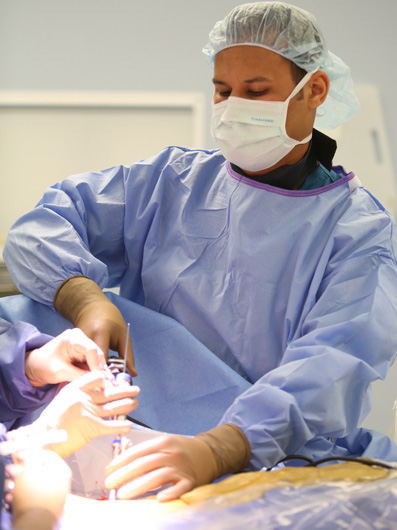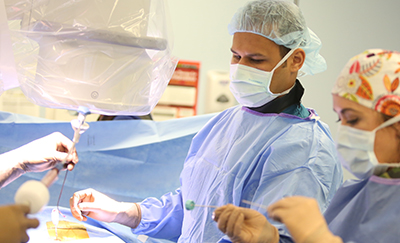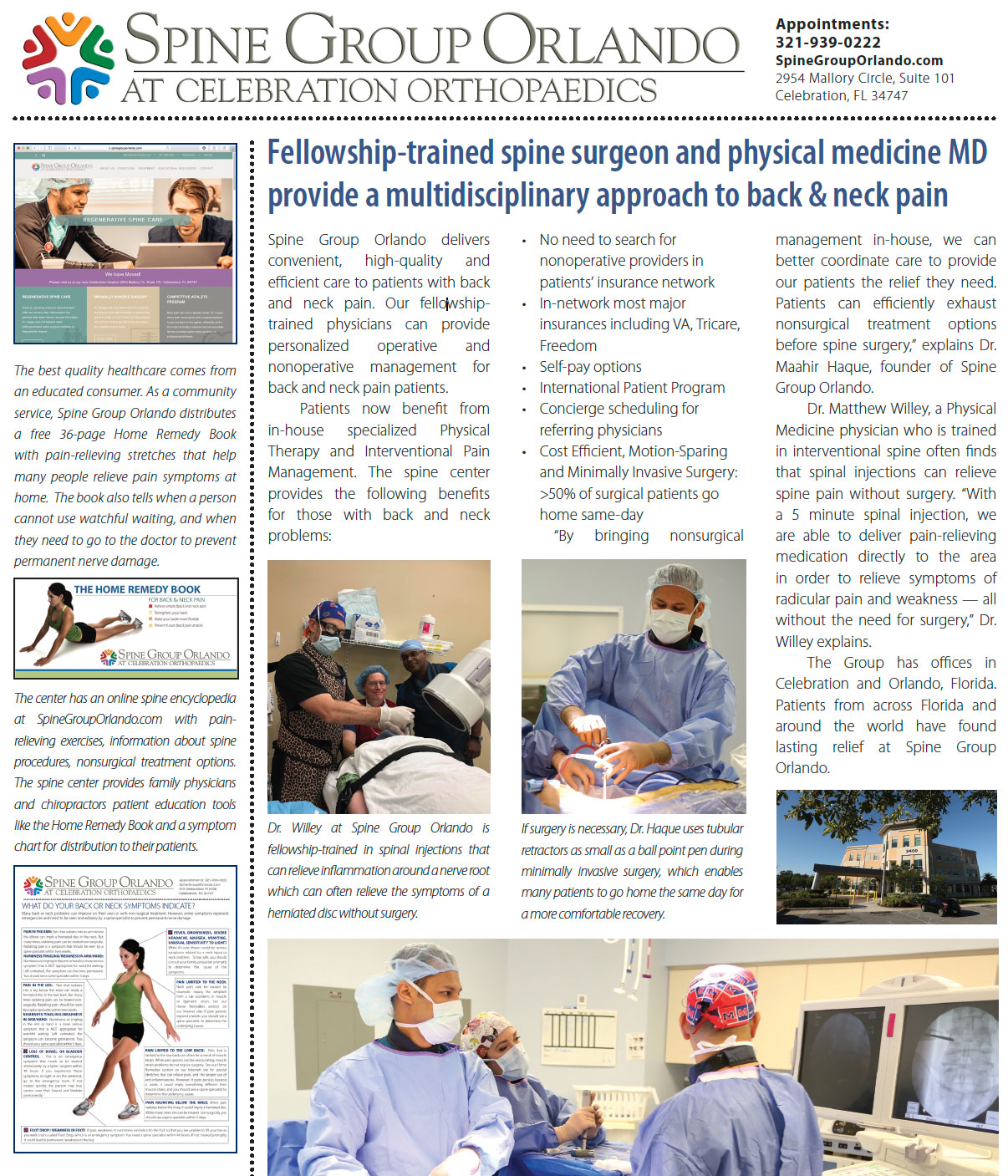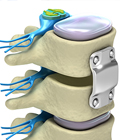Microdiscectomy
Overview
A minimally invasive microdiscectomy is a procedure to remove herniated disc material that presses on nerves or the spinal cord causing pain and weakness in the patient. Many ruptured discs may be resolved on their own, non-surgically, so that microdiscectomy is not necessary.
About the Microdiscectomy Procedure
During the surgery, a fluoroscope is used to project live x-ray pictures onto a monitor giving the surgeon a clearer view of the area being treated. The spine surgeon typically performs most of the surgery to repair the ruptured disc while watching it on the monitor.
 The spine surgeon will wear safety glasses with a microscope attached to each eye to increase their vision of the small area being operated on.
The spine surgeon will wear safety glasses with a microscope attached to each eye to increase their vision of the small area being operated on.
About a one inch incision is made over the injured disc on the patient’s back. Small wires are slowly inserted into the incision site to help split the muscle in the spine and allows for a small opening for the spine surgeon to work within. The wires help spread the muscles instead of cutting it and causing unnecessary damage. A specially fitted retractor is used to hold the muscles to the side and out of the way during the operation. A very tiny amount of bone (lamina) is removed to allow for more space between the two vertebrae, in which no instability results from this. Then the nerve is retracted towards the middle of the spine. This procedure helps remove pressure on the pinched nerve.
In most cases microdiscectomy is performed as an outpatient procedure or 23 hour stay. Most patients are able to return to work in one to two weeks following a microdiscectomy.
Maahir Haque, MD is recognized as a leader in the field of minimally invasive spine surgery. At Spine Group Orlando, Dr. Maahir Haque also provides second opinions for spine surgery and MRI reviews for those with back pain and neck pain. Dr. Haque emphasizes non-surgical options for back pain and neck pain where possible. This can include accessing a back pain specialist with expertise in pain-relieving spinal injections and spine therapists. Spine therapy can include back stretches that can be a future home remedy for back pain or neck pain. If spine surgery is necessary because of a herniated disc, spinal fracture, or spinal stenosis, Dr. Maahir Haque operates through tubular retractors that reduce the size of the incision, lessen blood loss, reduce time in the hospital, speed return to activity with a less painful recovery. This spine surgery expertise enables many patients to have outpatient spine surgery and be home the same day. Spine Group Orlando and Dr. Maahir Haque provides artificial disc replacement in the neck using the Mobi-C disc implant, the first FDA-approved disc for multiple levels in the neck. Prodisc-C is also used for artificial disc replacement in the cervical spine. Dr. Haque is also one of the few spine surgeons in Orlando, Florida to provide lumbar artificial disc replacement using the Prodisc-L artificial disc. Dr. Haque is also referred patients from across Orlando and north central Florida for artificial disc replacement surgery as an alternative to spinal fusion. Accordingly, Dr. Haque's patients travel from across north central Florida, including: Orlando; Jacksonville; Tallahassee; Lakeland; Gainesville; Tampa; Daytona Beach; and Cocoa Beach. The spine center, as a destination for medical tourism for some international patients from Mexico and the Caribbean, can provide recommendations to out-of-town patients on nearby hotels and tourist attractions. Dr. Haque is featured on the national site CentersforArtificialDisc.com as an author on the subject of artificial disc replacement for herniated discs in the neck. The Centers for Artificial Disc web site has content specific to disc replacement options and alternatives to spinal fusion. Click here to visit the Centers for Artificial Disc.







